The cooperation of government-led research and the high-tech industry is not new in the market. In China, this cooperation is about to get more obvious and close. This deeply influences the overall R&D capability of some Chinese high-tech industries in the future; security is also one of them.
With Chinaˇs economy policy gradually becoming more market-oriented over the last 20 years, many n...
The cooperation of government-led research and the high-tech industry is not new in the market. In China, this cooperation is about to get more obvious and close. This deeply influences the overall R&D capability of some Chinese high-tech industries in the future; security is also one of them.
With Chinaˇs economy policy gradually becoming more market-oriented over the last 20 years, many national policies and strategies are also following this trend. Therefore, right around the 1990s, the Chinese government started reducing financial support of some research institutes strategically, especially some government-owned ones. This drove some research institutes to transform into privately-owned enterprises. Moreover, professors at universities were also required to cooperate with private companies in order to take national research projects or receive continuous financial support from the government. This atmosphere significantly influenced the development of many industries in China.
Take the security industry, for example. Some well-known research institutes, such as the Peking University, Tsinghua University, Wuhan University, Zhejiang University, the Chinese Peopleˇs Public Security University and the Chinese Academy of Science have been resources of fundamental research for many security companies for some time. Moreover, the Chinese government has just included security as a key national industry in the latest five-year national projects from 2006 to 2011. It is also the first time that the security industry is separated from other industries in the national project.
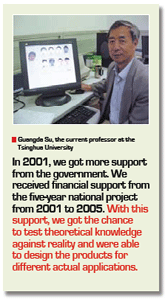
Given the more-than-sufficient financial budget from the government, research institutes and companies have an even closer cooperation and relationship now, particularly in security industry. Currently, the main direction in their cooperation can be seen as fingerprint/ facial algorithms and digital video/audio surveillance, especially in intelligent video and central management software.
The Chinese Peopleˇs Public Security University even offered an undergraduate degree in security from 1996, added a masterˇs degree from 2003 and established a security department in 2005, providing comprehensive education and research in security. This is one of the first universities in China and the world that provides education and fundamental research especially for security.
Biometrics
In the biometric industry, the cooperation between research institutes, universities and the industry is even closer. While research and application of fingerprint recognition algorithms is still popular in China, many experts have started to notice that facial recognition, as a less intrusive identification method compared to fingerprinting, may become the next blockbuster. Therefore, some companies are actively cooperating on related research of facial recognition at universities or research institutes. For example, Isvision in Shanghai and the Institute of Computing Technology of Chinese Academy of Science jointly developed a technology for facial recognition products that are able to work under any amount of visible light. Hisign in Beijing cooperated with the Tsinghua University to build up a large database of human faces. AuthenMatric in Beijing and the Institute of Automation of Chinese Academy of Science developed an IR facial recognition technology.
In the past, the development of facial identification technologies was not supported by governments or any particular industry. It was not until the Sept. 11, 2001 terrorist attacks and the 2005 London bombings that the technology started to enjoy the worldwide limelight. ¨In 2001, we got more support from the government. We received financial support from the five-year national project from 2001 to 2005. With this support, we got the chance to test theoretical knowledge against reality and were able to design the products for different actual applications,〃 said Guangda Su, the professor at the Tsinghua University. ¨We can make facial identification technology easy to adapt for different environments. The technology was influenced largely by many factors, such as light, faces in different angles, ages and expression. We are able to provide solutions with more stability and high suitability to different variants.〃 He now cooperates with PSI Technologies in Beijing to market the technology.
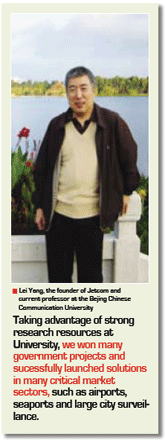
IR used for facial recognition, developed in the Institute of Automation of Chinese Academy of Science, could be one of the most significant recent breakthroughs in the market. One of the biggest variants interfering with the total performance of facial recognition is light, such as insufficient lighting or light coming from different angles. With this technology updating its hardware and software, the images of faces are clear in any lighting and under any environments.
Even though some facial recognition technologies are still in the theoretical status, in 2007, 3,000 ATMs will be embedded with facial recognition, as well as networked with the police system in China. There will be an increasing number of projects in transportation and public safety, especially the Safe City projects using facial recognition. Driven by large domestic product demands and the involvement of research institutes, Chinese facial recognition technology can be expected to be as mature and stable in a short amount of time to be competitive with overseas technologies.
CCTV and DVR
For Chinaˇs DVR industry, the convergence of research groups and industry has also been a crucial factor to its rise. This influence is seen in the backgrounds of some major DVR vendors. Due to their success, the Chinese DVR and CCTV industry became well-known in the worldwide market.
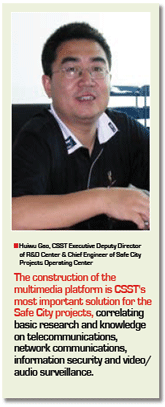
In 2000, some national research centers started to transform into enterprises, such as Dali and Hikvision. Dali, for example, was the former Zhejiang Testing Technology Institute in 2001 and possessed the most high-end products at that time. "We got the first electronic microscope in our testing center, which is the first set in Zhejiang province,〃 said Huimin Pang, CEO of Dali. ¨And, just because we had the strong background in operating those high-end machines and facility, it is much easier for us to develop the genuine technology of manufacturing equipmentsinfrared thermal imaging cameras and later DVRs.〃 Now, the infrared thermal imaging cameras produced by Dali have been listed the No. 1 brand and the largest demand in China, beating other foreign companies. Dali''s IR imaging cameras are mostly adopted by many electricity power plants. Later, Pang launched their first DVRs in 2003. Soon, it also became one of the top three leading DVR manufacturers in China.
In addition, Hikvision, the current No. 1 DVR vendor in China, also used to be the company under the 52nd Research Center of Ministry of Information Industry. It enjoyed high profit growth of 105.4 percent for 2005 to 2006, beating the gross profit growth of many current worldwide security companies. For seeing the multiple opportunities in security, Hikvision was separated from the research center in 2000 and formally entered the security industry. Another example is Skyvision, now part of the CSST Group, writing DVR software and also developing management software. The founder of Skyvision is also from the 52nd Research Center. Until now, Skyvision works closely with some national research centers for the Safe City projects.
IP Video Solution
For IP video solutions, the cooperation between research institutes and the industry becomes more fundamental. Take CSST, the biggest total solution provider in China, for example. Its product planning and development center at its headquarters is now focusing on research and development in intelligent video, biometric identification and most importantly, the total solution for securitythe multimedia platform.
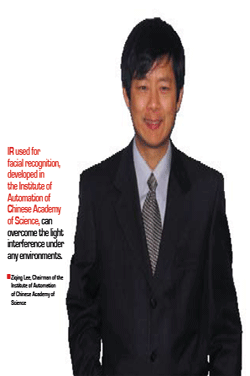
Huiwu Gao, CSST Executive Deputy Director of R&D Center & Chief Engineer of Safe City Projects Operating Center mentioned that the construction of the multimedia platform is CSST''s most important solution for the Safe City projects, correlating basic research and knowledge on telecommunications, network communications, information security and video/audio surveillance. With this platform, CSST intends to integrate multiple networks including networks of video surveillance, after-sales service, police systems, IT network construction and maintenance and information security, all together in one total solution for city surveillance. Therefore, ¨CSST''s headquarters and its multiple subsidiaries actively cooperate with many leading research institutes, especially the Wuhan University, to develop any related core technology and research,〃 said Guohui Cao, Executive Assistant to President & Chief Strategic Planning Officer. Furthermore ¨CSST is also planning to establish its own research center and inspection center in the near future. More close cooperation with research institutes can be expected.〃
Jetcom, one of the major distributors and system integrators in China, is also another typical example. The founder of Jetcom, Lei Yang, is also the current professor in the Bejing Chinese Communication University. Yang gets involved in many national security projects and establishment of standards. Recently, he is involved in the establishment of multiple standards used for one nationwide police networking system.
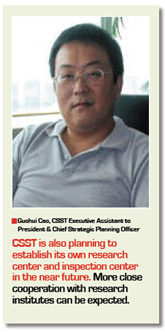
Taking advantage of strong research resources at University, Jetcom won many government projects. Jetcom successfully launched solutions in overcoming the challenges in video data transmission under different bandwidths and the integration of traditional CCTV with other automation systems, such as information security system. Jetcom is also working on the construction of an IP video surveillance platform, especially in many critical market sectors, such as airports, seaports and large city surveillance.
Seeing the Future
Compared to other countries, the system to connect research resources with the industry still has room for improvement in China. However, the efforts coming from the government, research groups and the industry to promote the convergence of all the resources are notable. One should keep in mind the original solid research behind high technology in China. As soon as the system is well-constructed, the overall enhancement of Chinese R&D in many industries will be coming soon.